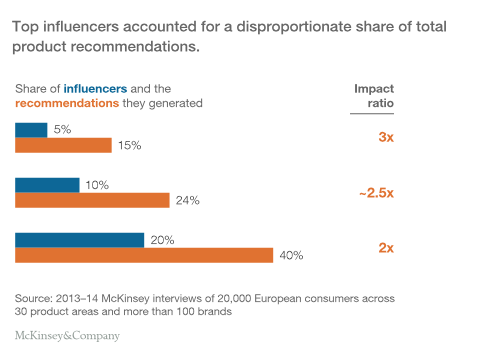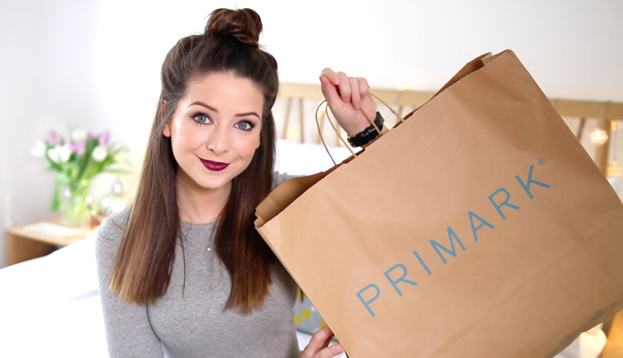More and more marketers are using social media to some extent in order to spread the word about products, whether it’s creating a devoted Facebook page for a film or talking with consumers on Twitter through a special account. But according to a new research report from McKinsey and Company, it could be more effective than anyone may realize.
The company recently examined purchase decisions of 20,000 European consumers across 30 product areas and 100 brands between 2013 and 2014 to get a better idea of how much social media influences their buying decisions. From their report, “the impact of social media on buying decisions is greater than previously estimated and growing fast,” although “its influence varies significantly across product categories. Moreover, only a small slice of social influencers are creating the buzz.”
Social recommendations have an average of 26 percent of purchases across all the product categories, which is higher than the ten to 15 percent others previously estimated. Two-thirds of the impact appears to be direct, with recommendations having a big part in the point of purchase. Furthermore, consumers made 10 percent additional purchases on the back of social media recommendations last year alone, compared to 2013.
Social media is also accessed in different ways, depending on the product. Only 15 percent of respondents reported using social media for utility services. However, in other categories, like travel and investment services, that number rose up to 40 to 50 percent when it came to social media recommendations.
Product categories can also have their own specific groups of influencers. In fact, very rare are folks that provide recommendations for any two consumer categories, by a maximum of 15 percent out of those polled. Timing also plays a big part, as consumers purchasing products for the first time are 50 percent more likely to turn to social media for recommendations or purchases, over a repeat buyer.
While social media plays a big part, the “analog world,” as McKinsey deems it, still plays a big part. About half of the recommendations from the 100 or so products were made offline, either in person or over the phone. Offline conversations actually consisted of a 40 percent increase over digital interactions to influence certain purchases, with people preferring the “direct contact” approach over digital means.
10 percent of active influencers made up for 24 percent of total recommendations overall on social media, between the likes of retweets, likes and other interactions. The chart below highlights just what kind of share the influencers have in terms of their effective recommendations. As you can see, it varies by impact ratio.

More information on this report can be found here. It’s quite a read, especially for those wanting to learn more about the true impact of social media.

